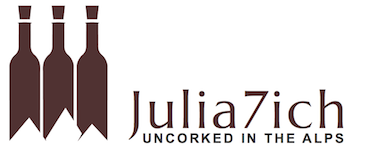Perhaps I should start by telling you what the Master of Wine examination for which I am preparing entails. It is actually 4 days of examinations. There are seven papers; three are called practical papers and four are called theory papers.
The theory exams consist of essay questions. Theory Paper 1 is devoted to wine production from viticulture through alcoholic fermentation. Theory Paper 2 covers wine production from the end of alcoholic fermentation to its final packaging and sale. Theory Paper 3 goes into the business of wine and one can expect questions that one could pose a MBA student. Theory Paper 4 is devoted to current issues and gives students an opportunity to present informed opinions, argumentations and solutions to things like alcohol and social responsibility, global financial crisis and the wine trade, or global climate change and wine production, and so on. These theory exams take place in the afternoon after the practical exams and take around three hours.
Each practical paper is a tasting of 12 wines that have been tempered to their proper serving temperatures and decanted into neutral, numbered bottles. Students have 2 hours and 15 minutes to taste the wines and answer questions about them. Two and a half hours may sound like long enough to correctly identifying 12 wines, but you’d better not take more than 20-30 minutes for the actual tasting because you’ve got around 15 pages of questions about those wines. You are expected to give evidence of your conclusions with what you taste in the glass. Here is our first tasting paper on the first day at 8:30 AM:
Practical Paper 1 Questions
1. Wines 1-4 are from four different countries and four different single varieties.
For each wine
a) Identify the grape variety giving reasons. (4×5)
b) Identify the country and region of origin giving reasons. (4×10)
c) Comment on the winemaking techniques employed. (4×10)
2. Wines 5-8 are all from Burgundy and from a single vintage.
With reference to each wine:
a) Identify the vintage, giving reasons. (20)
Then for each wine
b) Identify the origin as closely as possible, giving reasons. (4×10)
c) Comment on the quality of the wine in context of the origin. (4×10)
3. Wines 9-12 are from four different countries and share a common grape variety. Two are single varietal wines and two are blended with a second varietal.
a) With reference to all the wines, identify the common grape variety. (6)
b) Identify the two blended wines and the second varietal used in each case, giving reasons. (6)
Then for each wine
c) Identify the region of origin giving reasons. (4×7)
d) Comment on the quality and the wine’s position in the marketplace. (4×8)
e) Comment on the wine’s maturity (4×7)
Practical Paper 1 Crib Sheet
1. Bellingham Old Vine 2008 Chenin Blanc, South Africa – Western Cape, 14.5%
2. Vidal Riesling 2008 Riesling, New Zealand – Hawke’s Bay, 12.5%
3. Shaw & Smith M3 2007 Chardonnay, Australia – Adelaide Hills, 13%
4. Terradora Fiano di Avellino 2008 Italy – Campania, 13.5%
5. Sauzet Bourgogne Blanc La Bufera 2007, 12.5%
6. Domain Mestre-Michelot, Meursault Les Narvaux, 13%
7. Domaine des Maillettes, Pouilly Fuisse, 13%
8. Long-Depaquit, Chalblis Grand Cru Vaudesirs, 13.0%
9. Montes Reserva Sauvignon blanc 2009, Chile – Casablanca, 13.5%
10. Moss Wood Semillon Sauvignon 2008, Australia – Margaret River, 13.5%
11. Château La Garde Blanc 2008, France – Graves/Pessac, 12.5%
12. Spier Sauvignon Blanc 2008, South Africa – Western Cape, 12.5%






